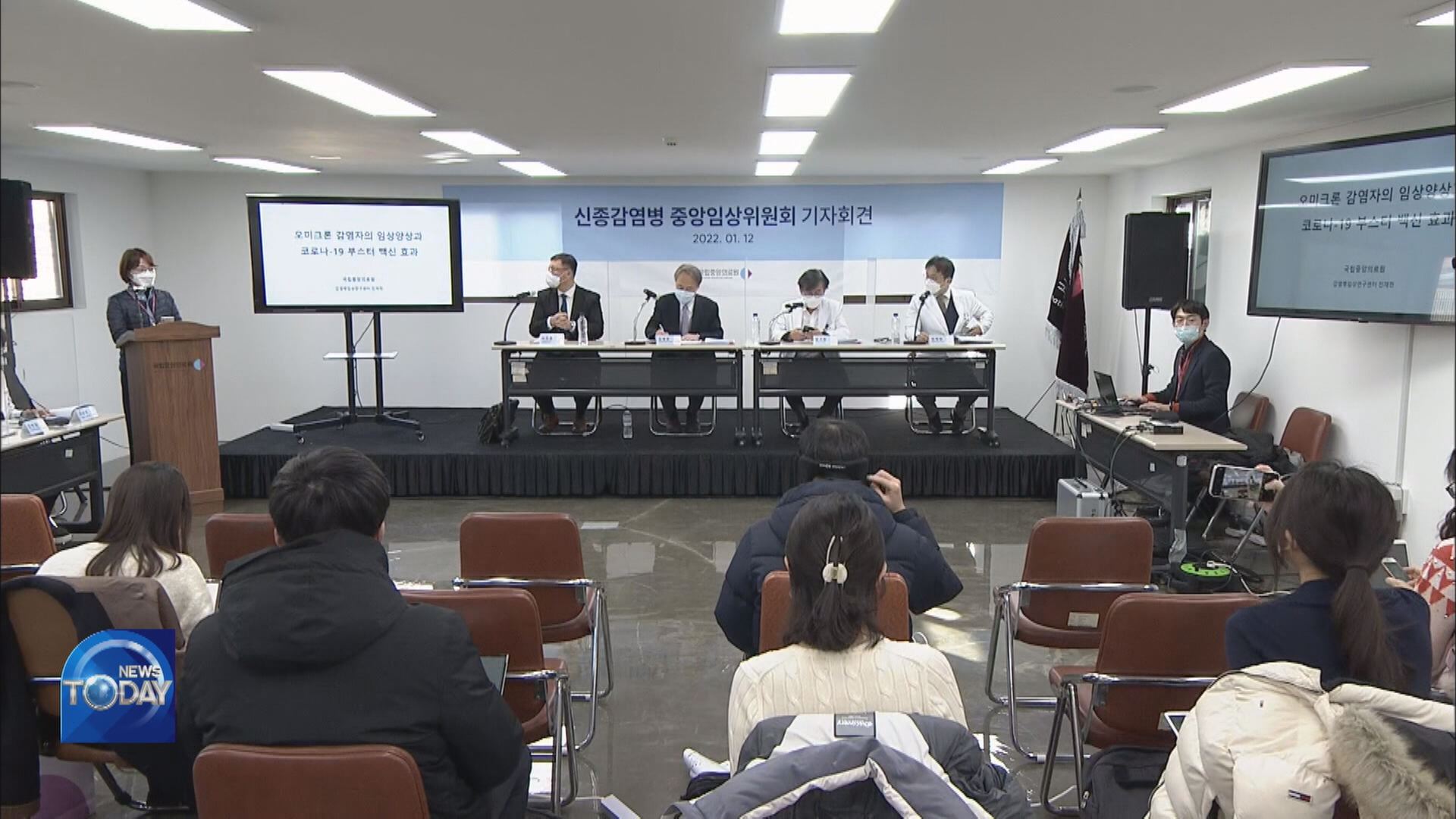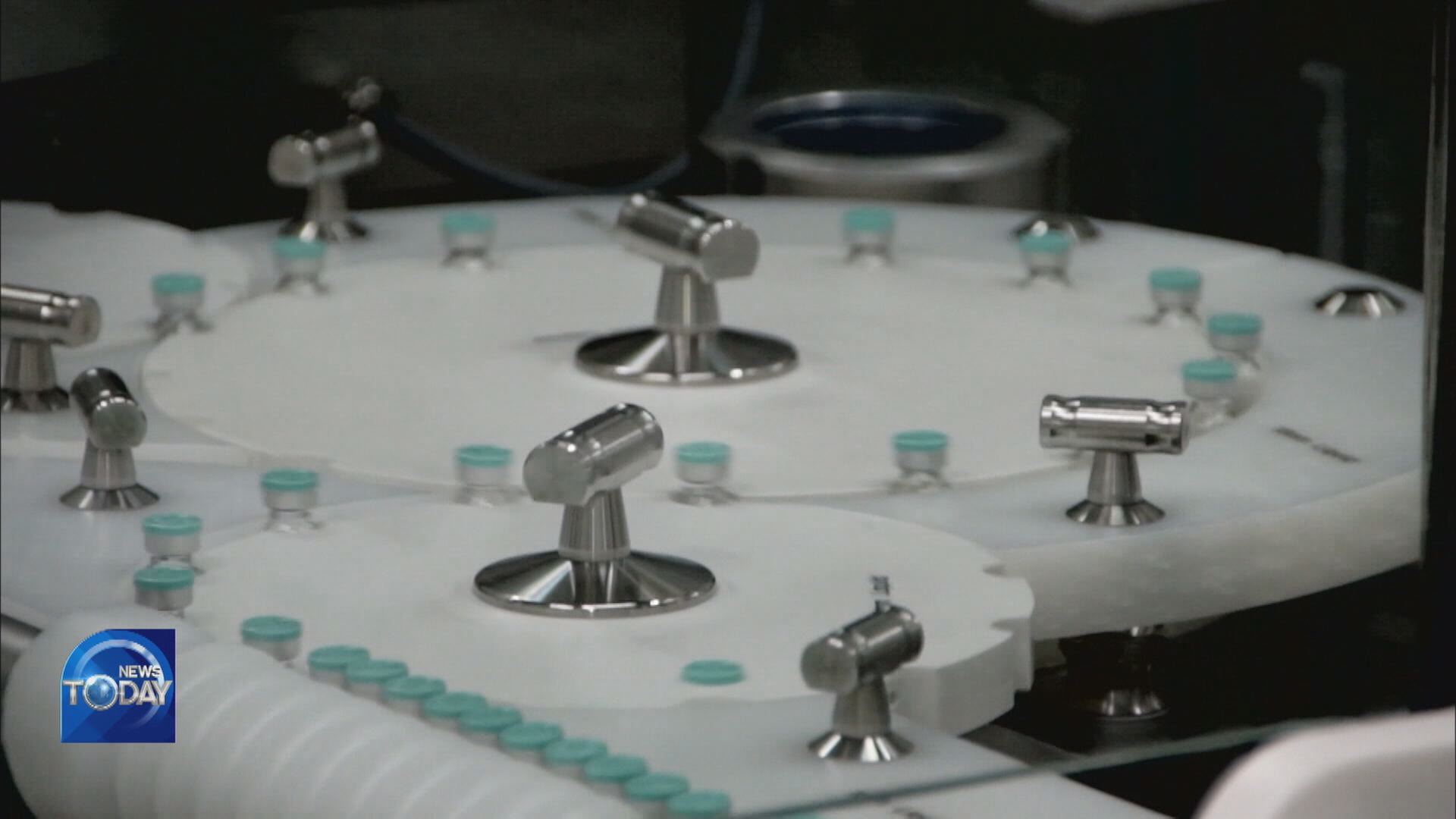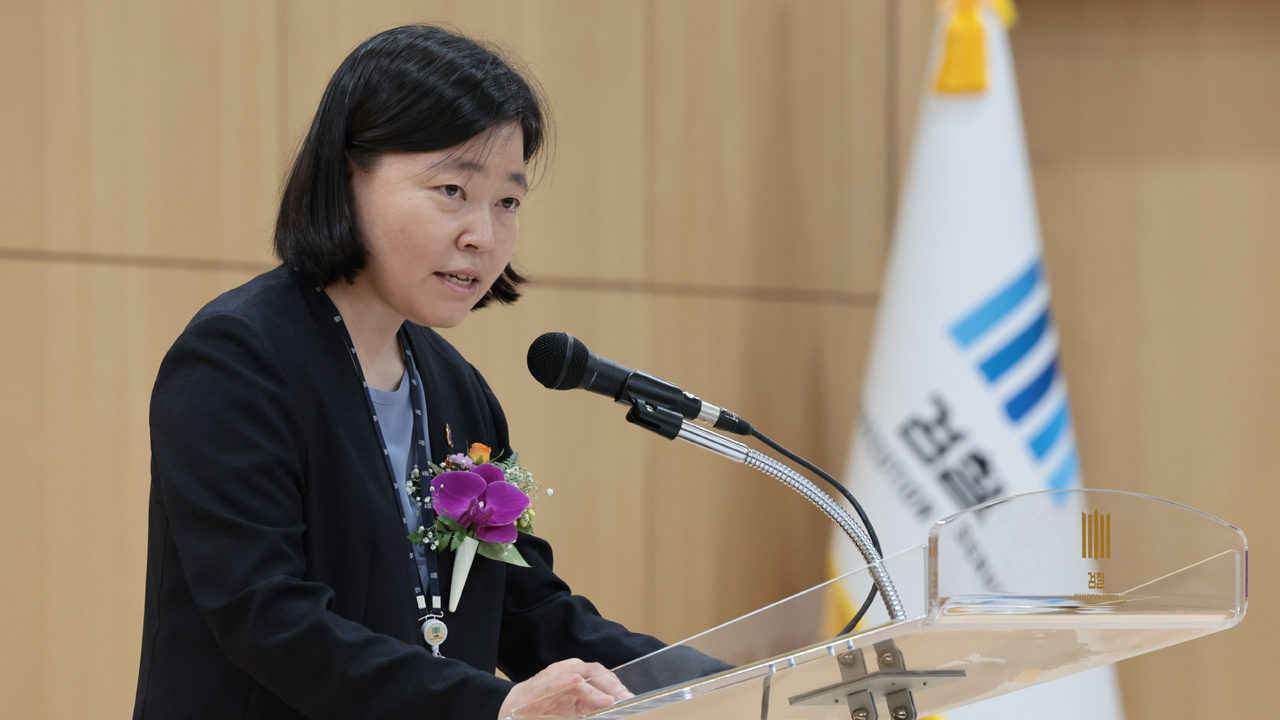MEDICAL RESPONSE PROTOCOL FOR OMICRON
입력 2022.01.13 (15:32)
수정 2022.01.13 (16:47)
읽어주기 기능은 크롬기반의
브라우저에서만 사용하실 수 있습니다.
[Anchor Lead]
Clinical findings of local omicron patients showed that although the symptoms from the omicron variant infection may be milder than those from the delta variant, a big surge is inevitable as the new variant is transmitted that much faster. Experts propose that the medical response protocol must be reshaped to minimize the damage rather than to stop the spread.
[Pkg]
Since omicron spreads two or three times faster than delta, more than 20,000 new cases are likely to be reported daily once it becomes the dominant variant. Experts stress the objective of disease control measures should be minimizing damage rather than stopping the spread. They suggest changing the COVID-19 treatment protocol as the existing methods can no longer handle a soaring number of patients. The solution is to allow all hospitals and clinics to treat COVID-19 patients, just like they would with the flu. This is the conclusion drawn from a clinical study conducted on 40 omicron patients admitted to the National Medical Center between December 4th and the 17th.
[Soundbite] Oh Myoung-don(Central Clinical Committee for Emerging Infectious Diseases) : "All medical institutions should participate in patient treatment. Neighborhood clinics should undertake the primary treatment of COVID-19 patients."
They point out, medical protective masks are enough to protect medical professionals instead of full-body protective clothing. A study of local omicron cases show the variant causes less pneumonia and infects mostly the upper respiratory tract like the nose and larynx. This National Medical Center analysis showed 48% of the patients had no symptoms at the time of hospitalization and even those with symptoms suffered from mild symptoms such as fever, headache and cough. Fifteen percent of the study subjects were diagnosed with pneumonia through their lung CT scans but were asymptomatic or only mildly symptomatic. Some experts gave a hopeful projection, saying the omicron variant is the last hurdle we have to overcome and the surge would be over in two months.
[Soundbite] Oh Myoung-don(Central Clinical Committee for Emerging Infectious Diseases) : "The flu surge ends generally in two months. The U.S. has presented model data that shows the peak would be over in two months."
Meanwhile, a comparison of COVID-19 aftereffects and those of the flu showed the coronavirus didn’t have a higher risk of most complications such as cardiovascular diseases or chronic obstructive pulmonary diseases than the flu.
Clinical findings of local omicron patients showed that although the symptoms from the omicron variant infection may be milder than those from the delta variant, a big surge is inevitable as the new variant is transmitted that much faster. Experts propose that the medical response protocol must be reshaped to minimize the damage rather than to stop the spread.
[Pkg]
Since omicron spreads two or three times faster than delta, more than 20,000 new cases are likely to be reported daily once it becomes the dominant variant. Experts stress the objective of disease control measures should be minimizing damage rather than stopping the spread. They suggest changing the COVID-19 treatment protocol as the existing methods can no longer handle a soaring number of patients. The solution is to allow all hospitals and clinics to treat COVID-19 patients, just like they would with the flu. This is the conclusion drawn from a clinical study conducted on 40 omicron patients admitted to the National Medical Center between December 4th and the 17th.
[Soundbite] Oh Myoung-don(Central Clinical Committee for Emerging Infectious Diseases) : "All medical institutions should participate in patient treatment. Neighborhood clinics should undertake the primary treatment of COVID-19 patients."
They point out, medical protective masks are enough to protect medical professionals instead of full-body protective clothing. A study of local omicron cases show the variant causes less pneumonia and infects mostly the upper respiratory tract like the nose and larynx. This National Medical Center analysis showed 48% of the patients had no symptoms at the time of hospitalization and even those with symptoms suffered from mild symptoms such as fever, headache and cough. Fifteen percent of the study subjects were diagnosed with pneumonia through their lung CT scans but were asymptomatic or only mildly symptomatic. Some experts gave a hopeful projection, saying the omicron variant is the last hurdle we have to overcome and the surge would be over in two months.
[Soundbite] Oh Myoung-don(Central Clinical Committee for Emerging Infectious Diseases) : "The flu surge ends generally in two months. The U.S. has presented model data that shows the peak would be over in two months."
Meanwhile, a comparison of COVID-19 aftereffects and those of the flu showed the coronavirus didn’t have a higher risk of most complications such as cardiovascular diseases or chronic obstructive pulmonary diseases than the flu.
■ 제보하기
▷ 카카오톡 : 'KBS제보' 검색, 채널 추가
▷ 전화 : 02-781-1234, 4444
▷ 이메일 : kbs1234@kbs.co.kr
▷ 유튜브, 네이버, 카카오에서도 KBS뉴스를 구독해주세요!
- MEDICAL RESPONSE PROTOCOL FOR OMICRON
-
- 입력 2022-01-13 15:32:15
- 수정2022-01-13 16:47:24

[Anchor Lead]
Clinical findings of local omicron patients showed that although the symptoms from the omicron variant infection may be milder than those from the delta variant, a big surge is inevitable as the new variant is transmitted that much faster. Experts propose that the medical response protocol must be reshaped to minimize the damage rather than to stop the spread.
[Pkg]
Since omicron spreads two or three times faster than delta, more than 20,000 new cases are likely to be reported daily once it becomes the dominant variant. Experts stress the objective of disease control measures should be minimizing damage rather than stopping the spread. They suggest changing the COVID-19 treatment protocol as the existing methods can no longer handle a soaring number of patients. The solution is to allow all hospitals and clinics to treat COVID-19 patients, just like they would with the flu. This is the conclusion drawn from a clinical study conducted on 40 omicron patients admitted to the National Medical Center between December 4th and the 17th.
[Soundbite] Oh Myoung-don(Central Clinical Committee for Emerging Infectious Diseases) : "All medical institutions should participate in patient treatment. Neighborhood clinics should undertake the primary treatment of COVID-19 patients."
They point out, medical protective masks are enough to protect medical professionals instead of full-body protective clothing. A study of local omicron cases show the variant causes less pneumonia and infects mostly the upper respiratory tract like the nose and larynx. This National Medical Center analysis showed 48% of the patients had no symptoms at the time of hospitalization and even those with symptoms suffered from mild symptoms such as fever, headache and cough. Fifteen percent of the study subjects were diagnosed with pneumonia through their lung CT scans but were asymptomatic or only mildly symptomatic. Some experts gave a hopeful projection, saying the omicron variant is the last hurdle we have to overcome and the surge would be over in two months.
[Soundbite] Oh Myoung-don(Central Clinical Committee for Emerging Infectious Diseases) : "The flu surge ends generally in two months. The U.S. has presented model data that shows the peak would be over in two months."
Meanwhile, a comparison of COVID-19 aftereffects and those of the flu showed the coronavirus didn’t have a higher risk of most complications such as cardiovascular diseases or chronic obstructive pulmonary diseases than the flu.
Clinical findings of local omicron patients showed that although the symptoms from the omicron variant infection may be milder than those from the delta variant, a big surge is inevitable as the new variant is transmitted that much faster. Experts propose that the medical response protocol must be reshaped to minimize the damage rather than to stop the spread.
[Pkg]
Since omicron spreads two or three times faster than delta, more than 20,000 new cases are likely to be reported daily once it becomes the dominant variant. Experts stress the objective of disease control measures should be minimizing damage rather than stopping the spread. They suggest changing the COVID-19 treatment protocol as the existing methods can no longer handle a soaring number of patients. The solution is to allow all hospitals and clinics to treat COVID-19 patients, just like they would with the flu. This is the conclusion drawn from a clinical study conducted on 40 omicron patients admitted to the National Medical Center between December 4th and the 17th.
[Soundbite] Oh Myoung-don(Central Clinical Committee for Emerging Infectious Diseases) : "All medical institutions should participate in patient treatment. Neighborhood clinics should undertake the primary treatment of COVID-19 patients."
They point out, medical protective masks are enough to protect medical professionals instead of full-body protective clothing. A study of local omicron cases show the variant causes less pneumonia and infects mostly the upper respiratory tract like the nose and larynx. This National Medical Center analysis showed 48% of the patients had no symptoms at the time of hospitalization and even those with symptoms suffered from mild symptoms such as fever, headache and cough. Fifteen percent of the study subjects were diagnosed with pneumonia through their lung CT scans but were asymptomatic or only mildly symptomatic. Some experts gave a hopeful projection, saying the omicron variant is the last hurdle we have to overcome and the surge would be over in two months.
[Soundbite] Oh Myoung-don(Central Clinical Committee for Emerging Infectious Diseases) : "The flu surge ends generally in two months. The U.S. has presented model data that shows the peak would be over in two months."
Meanwhile, a comparison of COVID-19 aftereffects and those of the flu showed the coronavirus didn’t have a higher risk of most complications such as cardiovascular diseases or chronic obstructive pulmonary diseases than the flu.
이 기사가 좋으셨다면
-
좋아요
0
-
응원해요
0
-
후속 원해요
0










![[HEADLINE]](https://news.kbs.co.kr/data/news/2022/01/13/20220113_RdHoys.jpg)

![[속보] 내란특검 “윤 변호인 수사방해 의혹, <br>파견경찰이 자료수집 중”](/data/news/2025/07/04/20250704_zxJ5qZ.jpg)
![[속보] 추경안, 국회 예결소위 <br>통과…민주당 단독 처리](/data/layer/904/2025/07/20250704_YazNaR.jpg)



이 기사에 대한 의견을 남겨주세요.